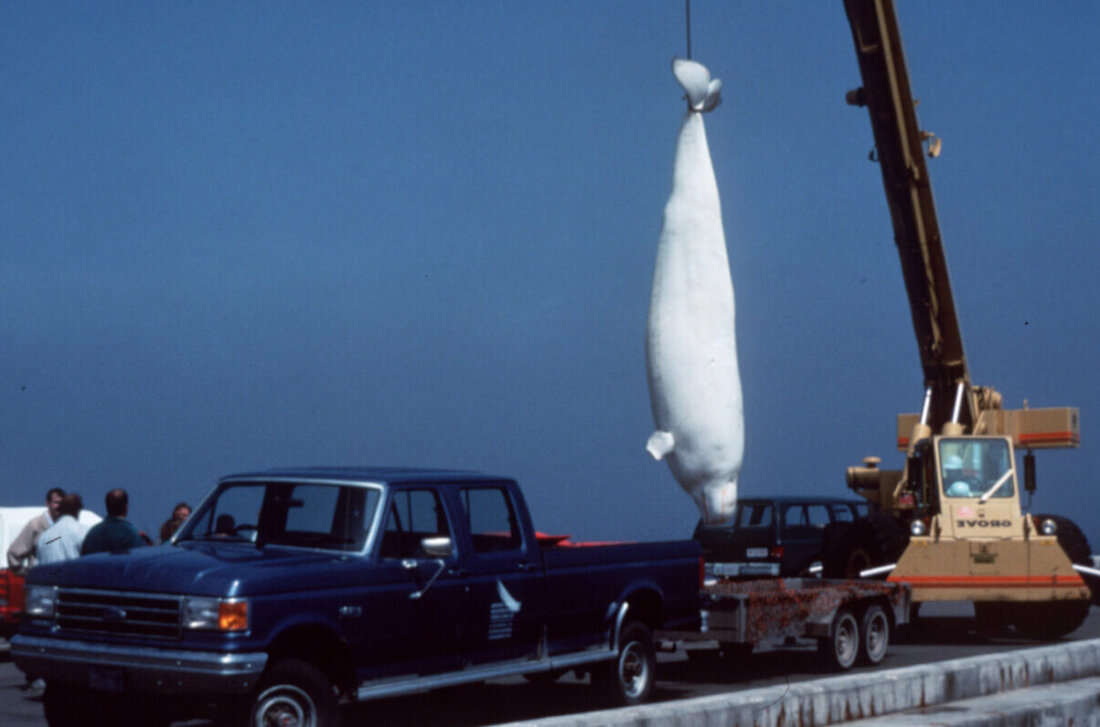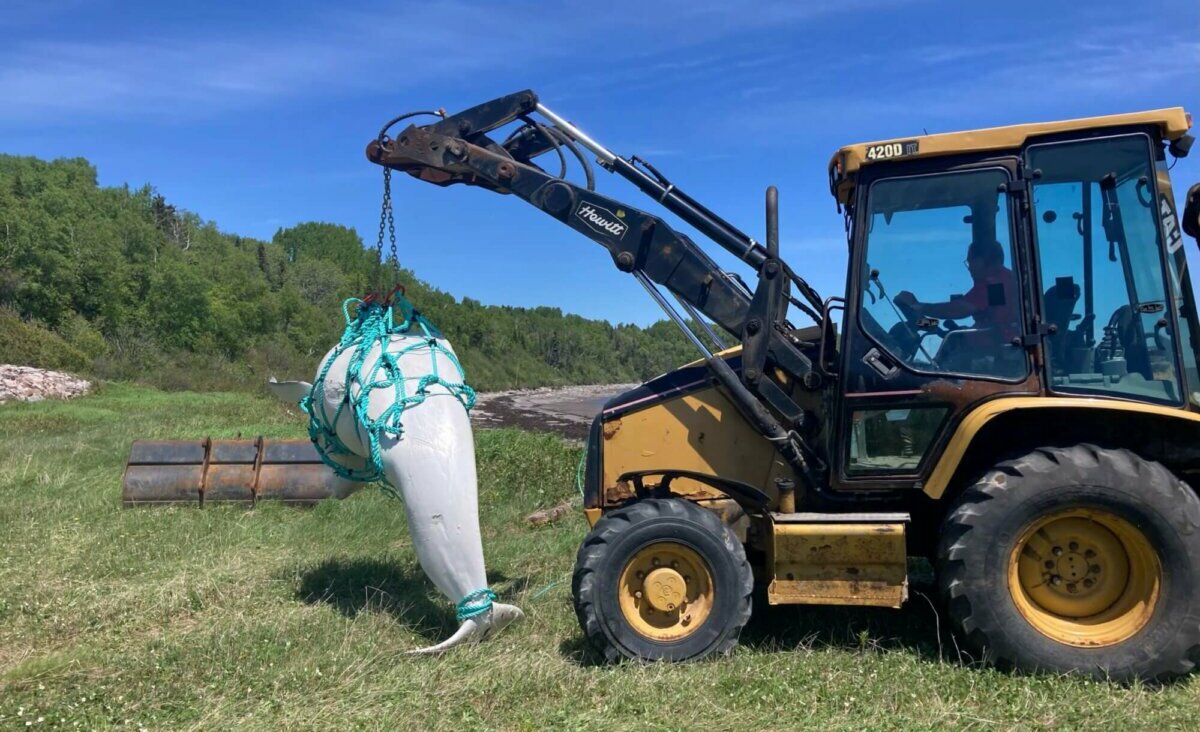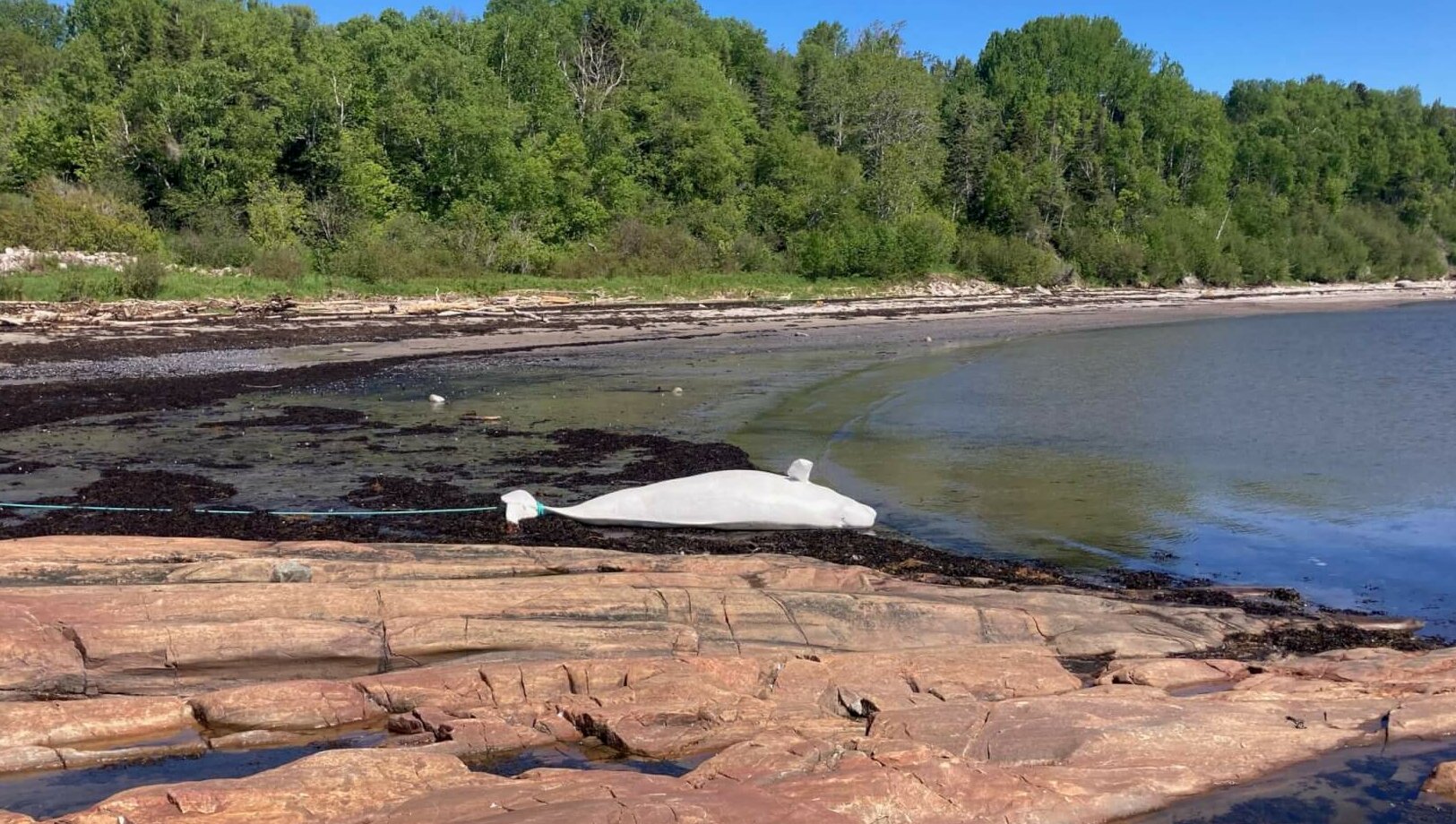Every year, between 15 and 20 beluga carcasses are found and recovered along the shores of the St. Lawrence. Why are they recovered? We have to go back 40 years – September 15, 1982 to be exact – to find the answer to this question. That day, Daniel Martineau and Pierre Béland wanted to better understand the cause of death of a 4.10-metre long male beluga stranded at Pointe-au-Père.
Where it all began
A congress on marine sciences was being held in Rimouski that day. The two men leave the congress and head to Pointe-au-Père to examine the beluga carcass. Daniel is a trained veterinarian and Pierre, an ecologist. They note that the animal bears no trace of injury. How did it die? They decide to open the carcass in an attempt to pierce the mystery. And so the beluga carcass recovery program was born, i.e. somewhat by chance. The book of the dead refers to the first chapter of the book “Les bélugas, ou, L’adieu aux baleines” written by Pierre Béland and published in 1996. In this first chapter, Pierre reveals his “Book of the Dead”, a register of belugas found dead since the fall of 1982. He tells of his first meetings with Daniel Martineau and how the study of beluga carcasses changed their lives.
At the time, scientists were already concerned about the fate of this species. Protected from hunting since 1979, the beluga population was placed on the endangered species list in 1983. The carcass recovery program continues to this day and has become the cornerstone of a vast research project that is still seeking to understand why the St. Lawrence beluga population has not recovered since the ban on whaling.
More specifically, carcasses found in good condition are sent to Université de Montréal’s Faculty of Medicine in Saint-Hyacinthe for a complete necropsy. Various analyses reveal a great deal of relevant information about each carcass, including the species, sex, age and size of the animal, as well as the cause(s) of mortality. Researchers also collect photos and samples to learn more about the biology, toxicology and diet of belugas.
Pierre Béland
Pierre Béland completed PhD and post-doctoral studies on the ecology of animal populations. It was as director of DFO’s Fisheries Ecology Research Centre that he went into the field to document the famous carcass of September 15, 1982. This encounter changed his career. Five years later, Pierre would leave Fisheries and Oceans Canada to establish, together with Daniel Martineau, Robert Michaud and Richard Sears, the St. Lawrence National Institute of Ecotoxicology where he would dedicate himself to the study and protection of belugas and the St. Lawrence.
Daniel Martineau
A veterinarian working in the Rimouski region at the time, Daniel Martineau and his career also took a 180-degree turn that day. He went back to school to specialize in pathology and would later lecture at Université de Montréal’s Department of Pathology and Veterinary Microbiology. There he would go on to direct the beluga necropsy program and contribute to the training of his successors, Drs. Sylvain DeGuise and Stéphane Lair. Stéphane is now the lead researcher for the program.
A model of perseverance and collaboration
September 15 marks the 40th anniversary of the beluga carcass recovery program. It is the longest program of its kind in the world for any species of marine mammal. Above all, it is also a model of perseverance and collaboration. Initiated by two passionate individuals, the program has been notably supported by Fisheries and Oceans Canada, Parks Canada, the World Wildlife Fund and sponsors of the “Adopt a Beluga” campaign. It has inspired innumerable collaborations and has been a source of hundreds of scientific publications. Behind this incredible adventure are two tireless technicians – Richard Plante for 15 years and Carl Guimont for 25 years – who have travelled tens of thousands of kilometres on both shores of the St. Lawrence, whether from Gaspé or Sept-Îles to Saint-Hyacinthe, to deliver nearly 300 carcasses to the care of researchers. Since 2022, the Quebec Marine Mammal Emergency Response Network (QMMERN) has taken over the task of recovering beluga carcasses.








